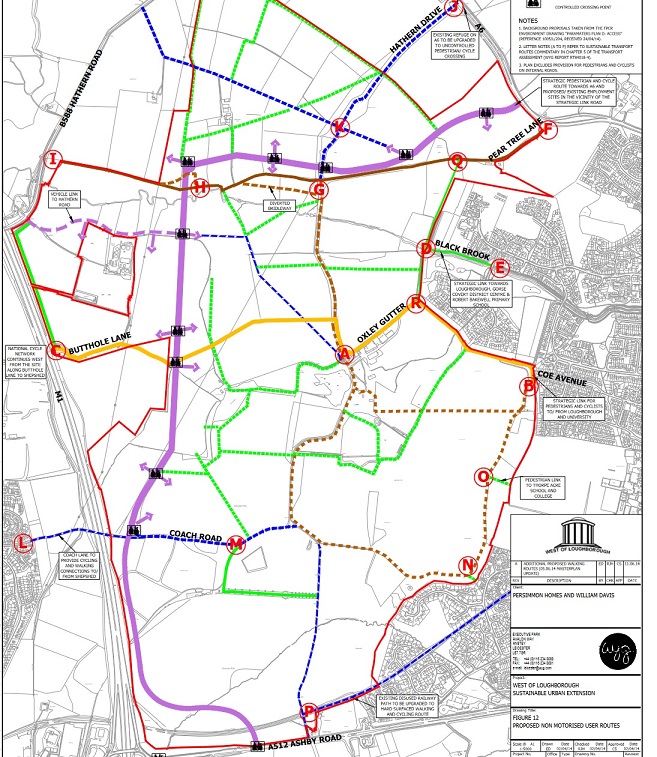- Children and Young People Chapter 6 p27
- Transport Assessment Chapter 5 p68; Fig 12 opposite
- Recreational Routes in 9 Phases.
Streets, Footpaths, Bridleways and Cycleways.
"A clear distinction is drawn between streets and roads. Roads are essential highways whose
main function is to accommodate the movement of traffic. On the other hand, streets are part of
the public realm with a place function quite different to roads. Creating a sense of place is
fundamental to the achievement of a richer environment and more fulfilling public spaces.
There is significant
opportunity for creating a more active, healthier and more stimulating street environment,
particularly for children and young people.
Streets are to be created as high quality places for all people, regardless of age or ability.
Children and Young People Strategy
People with Disabilties
The detailed design of the development and its internal transport infrastructure will be
undertaken in accordance with the requirements of the 1995/2005 Disability Discrimination Act
and in accordance with current good practice as embodied within the DfT’s “Inclusive Mobility”
document.
4.12.2 This approach will ensure that the completed development is fully inclusive and meets the needs of all users, including those with disabilities or temporary mobility impairments, such as those escorting elderly people or young children.
4.12.3 The requirement to design for disabled people will permeate all aspects of the design process
and will include access to and movement within the site, but also the interface between the
development and the surrounding highway network, and in particular the pedestrian routes
and public transport facilities.
Transport Assessment p65.
